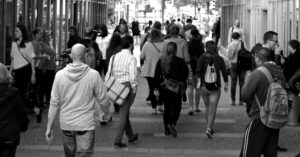This weekend my family and I celebrated Passover with a Seder meal. This is now the sixth time I have done this with my children, and I absolutely love being able to share this with them. And no, we are not Jewish. And I’m fully confident we don’t do it completely right. However, the purpose of every Old Testament feast and festival – and what should be the purpose of every Church age activity and ceremony – is to teach and to remember. And that is what I want to accomplish with the Passover with my family.
In this one evening, we can remind our children about the miraculous rescue by God of the Israelites from their slavery in Egypt and teach them that all of that was to point to the rescue by God of us from our slavery to sin. The imagery of the original institution of the Passover from Exodus 12 so clearly points to the work of Jesus found in the Gospels.
Jesus did not come to abolish the law or the Scriptures, but to fulfill it. Christianity is an extension of Judaism, the final conclusion to the cliff-hanger given in Malachi for the story God began in Genesis. God had promised out of His love for His creation to provide a remedy for the brokenness that sin had caused.
God said in the garden that one day a Savior would come to crush the head of the serpent forever. He promised Abraham that through him all nations would be blessed. He promised David that of His kingdom there would be no end. And when God rescued His people from slavery in Egypt it was a perfect picture of the rescue that would one day be for all people.
Understanding the Passover, or Seder, also provides us with a better understanding of the meal that Jesus ate with His disciples before He was arrested, tried, and crucified. While in the Christian church, we tend to refer to this as the “Last Supper,” this was a Passover Seder meal – the same feast that God instituted in the time of Moses to be observed forever, throughout their generations. Before going through the Seder myself, my only concept of this meal shared in the upper room was from da Vinci’s painting, where Jesus is sitting at a large table with his disciples where they share several loaves of bread. In reality, they would have been reclining and only eating matzah, unleavened bread.
In addition to a meal of roasted lamb and potatoes, I prepare the Seder plate, which contains a roasted egg, parsley, the lamb shankbone, the kharoset (a mixture of chopped apples and nuts), lettuce, horseradish, and a bowl in the center of salt water. Each of these foods is used to teach and remember different aspects of the Passover instituted in the days of Moses. They each illustrate the bitterness, pain, and tears of slavery, and even the mortar of the bricks they were required by Pharaoh to make.

The Seder begins with the lighting of the candles. For us, this is more ceremonial, but obviously for the time of Moses through the time of Jesus this was to provide light in a dark room. After the woman lights the candles, she says, “Blessed are You, O Lord our God, ruler of the universe, who has set us apart by His Word, and in whose name we light the festival lights.” This refrain is spoken throughout the Seder, with each aspect of the feast being referenced directly as a gift from the Lord our God who is the ruler of the universe. “Blessed are You, O Lord our God, ruler of the universe,” who has given us the fruit of the vine, the bread from the earth, and even the bitter herbs. All these things are blessings from the Lord who has supplied all our needs, who has given us Messiah, the forgiveness of sins, life abundant, and life everlasting.
Throughout the Seder meal, there will be four cups passed for all to drink – the cup of sanctification, the cup of the plagues, the cup of redemption, and the cup of praise. In Luke 22:17-18, Jesus said, “Take this and share it among yourselves. For I tell you that from now on, I will not drink the fruit of the vine until the Kingdom of God comes.” He said this as he passed the first cup around the table to begin the Seder meal.
Next, the leader of the Seder passes a bowl of water for everyone to wash their hands. However, in John 13:5, 12-14, Jesus did not pass a bowl for each person to wash their hands themselves. Instead, He “poured some water into a basin and began to wash the feet of the disciples and wiped them off with a towel wrapped around Him.” He did this to demonstrate being a servant to all. If He as Lord and Rabbi could wash their feet, then they could do so for each other.
As the Seder continues, there are several occasions where food is dipped. Parsley is dipped into salt water to remember the life of pain and tears the Israelites cried while enslaved in Egypt. Matzah, the unleavened bread, is dipped in maror, or bitter herbs (oftentimes, horseradish), to remember the bitter taste of slavery. Then, the matzah is dipped in the bitter herbs and into the kharoset, a sweet mixture of apples and nuts, to remember that even the most bitter circumstances can be sweetened by the hope we have in God.
This sheds some light onto Matthew 26:21-25 where Matthew recorded the moment where Jesus announced that someone would betray Him. Jesus said it would be the person who “has dipped his hand in the dish with me.” This process of dipping into the dish does not make complete sense without understanding the process of the Seder. Jesus dipped the “bread” or matzah into the bitter herbs and handed it to Judas as the one who would betray Him, a symbol of the bitterness of betrayal.
The matzah, the unleavened bread, provides another beautiful depiction of Jesus. Throughout Scripture, leaven is used as a symbol of sin. When Paul wrote in 1 Corinthians 5 about the sin the church at Corinth was allowing to sit in their midst without removing it, he said, “Do you not know that a little leaven leavens the whole lump?” In other words, leaven represented sin, that this sin being left in their midst would permeate through the whole congregation and affect everything.
Leaven was used to symbolize sin in the Old Testament as well. It was precisely because of this connection that God required them to remove the leaven from their homes entirely for Passover and for the next seven days (which would be the Feast of Unleavened Bread) according to Exodus 12. The grain offering was to be unleavened, and in Exodus 23:18 God forbid bringing the blood sacrifices with anything that had leaven in it. So not only is the lamb sinless and spotless, but the bread is without “sin” as well.
But the connection between the matzah and Jesus is even more profound. During the Seder, three pieces of matzah are wrapped together to show a three-in-one unity. Some Jews claim that it represents a unity of the patriarchs – Abraham, Isaac, and Jacob. Some explain it as a unity of worship – the priests, the Levites, and the Israelites. However, those who see the Messiah can clearly see the three-in-one unity as being a representation of the Trinity – the Father, Son, and the Holy Spirit.
Furthermore, during the Seder, the middle piece of matzah – the one that would be representative of the Son – is removed and broken in half. One half is returned to the bag containing the other two matzah; the other half is wrapped in white linen and hidden away for the rest of the Seder. It has been broken and buried away, just as Jesus was broken, wrapped for burial, and buried for a time.
The matzah is also striped and pierced. As Isaiah 53:5 says, “But He was pierced for our transgressions; He was crushed for our iniquities; upon Him was the chastisement that brought us peace, and with His wounds we are healed.”
This broken matzah is now called the afikomen, which means “the coming one.” It is hidden only for a time but will be brought back again to complete the Seder meal. Likewise, the “coming one” was buried only for a time, but resurrected to show His victory over sin and death. The sinless Messiah rose again from the dead to ascend into heaven.
The Passover is overflowing with the remembrance of the salvation given by God to the Israelites in Egypt, but it is also overflowing with the symbolism of the salvation coming to us through Jesus. In the days of Moses, the Israelites were to select a lamb that was to be slaughtered for the Passover meal. But the lamb was not just taken from the pasture, slaughtered, and then roasted and eaten. The lamb was first to be brought into the home for two weeks. This one-year-old male lamb was now more like a pet to the children than an animal to slaughter and eat. But this beloved little lamb was to be roasted and eaten with the unleavened bread and bitter herbs. Its blood was to be placed on the doorposts and the lintel of the house. When the Lord went through the land of Egypt that night to strike down the firstborn son in order to execute His judgment for their rebellion, He would see the houses with the blood of the spotless lamb and would pass over them, and no plague would come to that home. Exodus 12:13 says, “And when I see the blood, I will pass over you, and no plague will befall you to destroy you, when I strike the land of Egypt.”
Likewise, when we stand before God to face His judgment on our sins, those who have placed the blood of the spotless Lamb of God on their hearts, the wrath and judgment of God will pass over them. This is why John the Baptist, the one who came in the spirit of Elijah, announced Jesus’ ministry by saying, “Behold the Lamb who takes away the sins of the world.” (John 1:29)
At the end of the meal, the final item on the Seder plate is the lamb shankbone. The lamb shankbone is a reminder of the Passover lamb whose blood saved the Israelites from the last of the plagues, the death of the firstborn son. At this part of the service, there is a recitation that reminds the people that it was God Himself that rescued the Israelites from slavery in Egypt – not an angel, not a messenger, but God Himself. Likewise, to rescue humankind from sin, God did not send an angel or a messenger to save us from the consequences of our own sin and rebellion. It was God Himself through Jesus who became the Lamb and took away the sins of the world.





3 thoughts on “Jesus in the Passover”
That was wonderful. Thank you so much for ministry.
Fantastic explanation – thank you so much for spending the time to write this and explain this to us, but also for sharing this experience with your family!
For some reason, I am reminded of the scene in “The Courageous Heart of Irena Sendler,” where Irena shares the Passover meal with a Jewish family in the Warsaw Ghetto. Irena was in the process of rescuing 2500 children from the Nazis in that ghetto and would help one of the children in that particular family to escape.
There, in that meal, was a powerful confluence of Christianity and Judaism, and, by the Grace of God, Irena would go on to lead many Jewish children out of the slavery of the ghetto and to life outside of Nazi extermination, all because she loved her neighbor as herself. She would suffer mightily herself for this, being tortured by the Gestapo and narrowly ecaping execution at the last minute.
“Greater love has no one than this, that one should lay down his life for his friends.” – Jesus Christ (John 15:13)
Wonderful explanation.